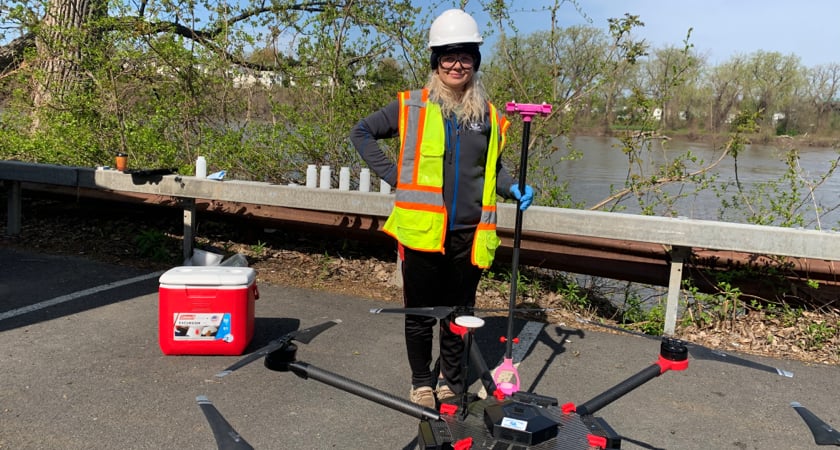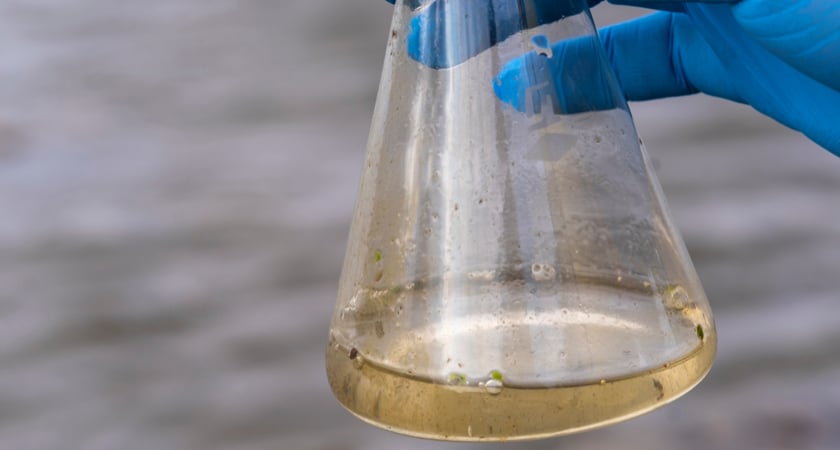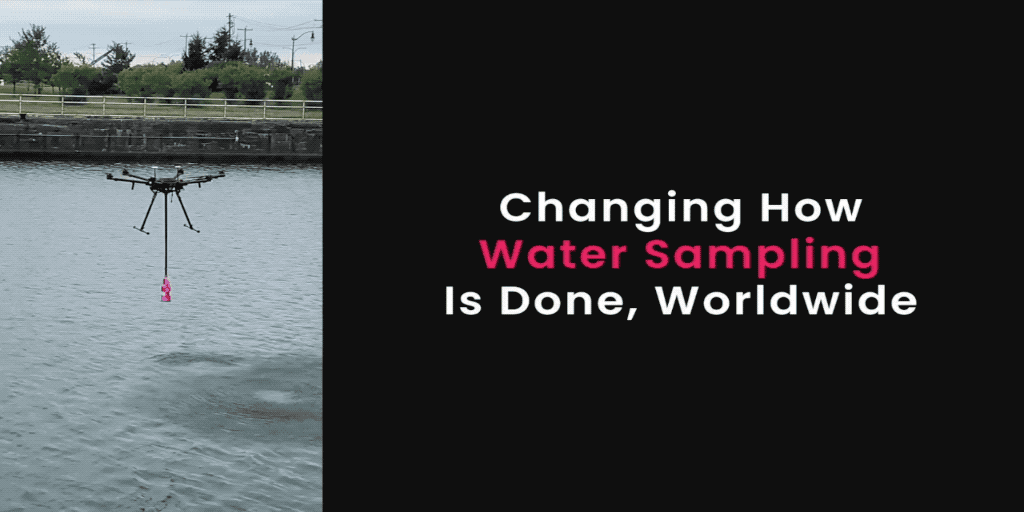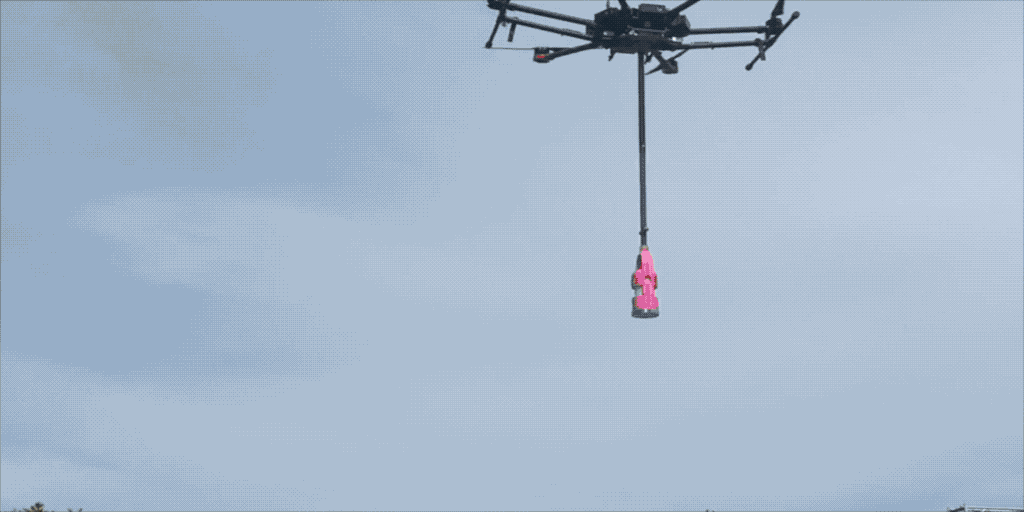For most Americans, water is a luxury to be enjoyed without a second thought. But as the water-poor communities of Flint, Michigan, and many other small, rural towns across the United States would tell you, access to safe water is not always a guarantee.
The Environmental Protection Agency (EPA) regulates almost 50,000 community water systems (CWSs) in the US. In 2018, the agency reported monitoring and reporting violations at more than 30 percent of these CWSs. The EPA now wants to reduce the number of non-complying CWSs by at least a quarter. And it wants to do that before the end of 2022.
This is where drones come into the picture, addressing the need for a low-cost, high-frequency water sampling technology to monitor and improve our water supplies.
Reign Maker, a New York firm specializing in building custom drone solutions, has been working with the New York City Department of Environmental Protection (DEP) for efficient monitoring of reservoirs and wastewater facilities since 2014.

Sadie from Great Lakes Drone Company, with Nixie and an M600 Pro
A few years ago, Jessica Chosid, CEO of Reign Maker, overheard a deputy commissioner expressing concern about the logistical complexities of keeping up with the EPA’s water sampling mandates. She decided to present her team of aerospace and mechanical engineers with a challenge: build a water sampling tool that would make it simple for drones to collect samples and provide easy water data management.
Today, Reign Maker has announced the launch of Nixie, a novel drone-enabled water sampling and sensor data tracking system that promises to reduce the time of water sample collection by 75 percent.
Why water sampling matters: a global perspective
Ensuring access to clean water and sanitation for all is one of the 17 Sustainable Development Goals set out by the United Nations. Achieving that goal is not going to be easy, considering that one in three people globally do not have access to clean drinking water.
“Experts predict a global shortage of potable water in the times to come,” Chosid quips. “Water has already begun trading on a futures market.”
Understanding what is and isn’t present in our waters is one of the first steps toward developing water protection and distribution policies.
Regular, quantitative sampling of surface waters allows local communities and environmental managers to better understand how water bodies change in response to pollution and how to protect them. Water quality experts also require frequent sampling data to predict how surface waters will respond to triggers like future growth or climate change.
And as Chosid points out, “The need for sampling will only increase in the near future, with population growth, industrial and residential development, increasing water regulations, and national security concerns.”

Traditional water sampling techniques don’t stack up
Government agencies, private entities, water conservation groups as well as public and private utilities have a variety of EPA water sampling methods and equipment at their disposal. These include dipping a sample container, scoops, peristaltic pumps, discrete depth samplers, bailers, buckets, submersible pumps, and even automatic samplers.
What method is ultimately used is typically dictated by the physical location of the investigator. But ideally, you want to avoid capturing the top surface water since that is not truly characteristic of the water body.
The problem is, most water sampling techniques are time-consuming, logistically complex, labor-intensive, and heavily dependent on the use of boats and boat crews. They are also prone to human error.
“While many think a water quality analysis begins in the laboratory, it truly starts during the collection of the sample,” explains Chosid. “Sample collection is critically important because the majority of errors during water quality analysis occur at this stage.”
Streamlined drone water sampling with Nixie
Nixie is most similar to the dipping method that uses a sample container. Only, it uses drones instead of boats.
The device is designed to hold EPA-approved water sampling bottles, and can easily plunge 2 feet into waters with up to 5 knots of current. This capability allows Nixie to exceed federal EPA guidelines, ensuring that it doesn’t merely collect the top layer of the water.
The workflow is also quite simple: You connect Nixie to a DJI M600 or an M300 RTK drone and insert a collection bottle as the flying robot hovers near you. After that, you navigate the drone to the target area and lower Nixie below the water surface. Once the collection process is complete, you retrieve the sample bottle in the same way, while the drone hovers. After that, it’s just ‘replace and repeat’.
Initial deployments of Nixie have proven that the device can reduce water sampling time by 75 percent, Chosid tells.

“The New York City DEP collects about 30 samples a day, using boats, captains, and a sampling crew of three. Nixie can grab 120 samples in the same 7-hour shift.”
Nixie is not just exponentially faster, but it is also much more consistent and efficient than traditional water sampling procedures.
In addition to collecting water quality samples, Nixie uses the drone’s GPS to log telemetry data – time and location coordinates. This step goes a long way to improve the sample’s chain of custody. Also, having access to historic GPS logs means Nixie can dip into the exact same location as the previous times to present the most accurate picture of the changing water quality.
“And let’s not forget that drone water sampling with Nixie can be mobilized immediately after a critical water event, even in areas where it may not be safe for human investigators to venture out physically,” Chosid quickly adds.
Interestingly, Reign Maker is also developing Nixie Advanced – a sensor-based system that will eliminate the need for physical sample collection altogether. The system will test over 20 different water parameters periodically and automatically upload the data to an analytics dashboard, with the aim of becoming the first worldwide centralized in-situ water database.

Reducing costs with drone water sampling
But how might all this translate into sums of cold, hard cash? Chosid explains with an example:
“New York City collects 14,000 water quality samples a year. On average, it costs NYC over $100 per sample. With Nixie drone water sampling, the cost can be as low as $10 per dip.”
Basically, Nixie is planned as a passive data revenue product providing both drone water sampling and a data management app platform. As such, more frequent dips and data collection enables Reign Maker to reduce the sampling costs significantly for government agencies and water utilities.
How DJI drone ecosystem is propelling innovation
All this critical work, Chosid says, could not have been made possible without the DJI Payload SDK and developer ecosystem, where the only limiting factor is the developer’s own imagination.
“Since most innovation in the drone ecosystem comes from small, nimble, grassroots developers, the technology needs to be made accessible and easily scalable.” And this is exactly what DJI is doing.
Though Nixie is envisioned to be adaptable to any heavy lift drone platform in the times to come, Chosid says she zeroed in on the M600 and M300 RTK platforms for the initial integration because of the products’ market dominance.
She stresses, “DJI’s open SDK allows for seamless payload integration, which is essential for progressive technology development. Emerging firms like ours need an open system to continue to innovate in the critical field of water sustainability.”
Water sustainability is indeed crucial to ensure that Americans and the rest of the world’s populations have easy access to what is deemed as a basic human right. As the United Nations succinctly identifies, without better water management, food production will suffer, millions of people will continue to die from water-related diseases, and there will be further losses in biodiversity and ecosystem resilience.
Drone water sampling may only be a step toward the better assessment of water quality conditions as well as the causes of impairment, but it’s definitely a step in the right direction.


.png?width=300&name=L3kv%20(1).png)

.png?width=300&name=FH2%20update%20(1).png)
-1.png?width=300&name=HS%20-%20Featured%20Images%20(3)-1.png)